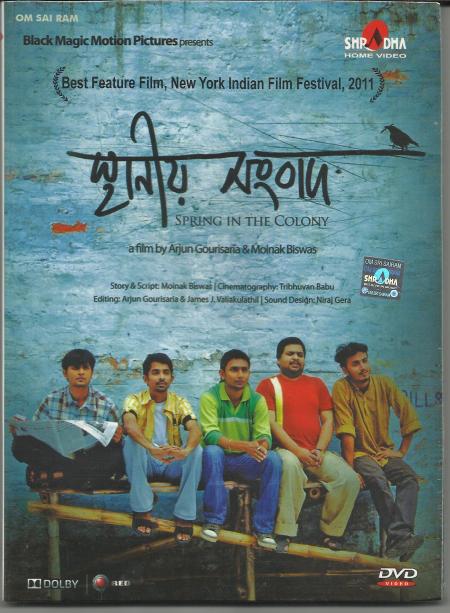I wanted to share some initial thoughts about Sthaniya Sambaad and some of why it has stayed with me. The film succeeds in evoking loss without nostalgia. It tells the story of neoliberal urban development with a degree of dispassion and a lightness of touch that is unusual. I feel strongly that we need a fresh language (visual, verbal) that can enable us to reflect on the things we witness not merely possess facts and figures about them. The stories that interweave to form the narrative of the film enable us to do this. They draw us in but only so far (the multiplicity of characters and subplots ensure we retain a certain distance). We are, in one sense like the unemployed boys. Like them we watch, simultaneously integral to and apart from what is gradually unfolding before us. And the kinds of stories that you have chosen to tell means we are positioned to contemplate not just the lives of your characters but the lifeworld of the street and community.
It is here especially that I feel that the soundscape of the film becomes crucial. The auditory shifts that accompany “development” have (to my knowledge at least) not been adequately explored. I am thinking not just of the marginalisation of the folk-song or the loss of quietude that undermines the street as a locus of open-ended conversation but also the fate of the cycle bell or the call of the vendor. All of this, as we know, becomes overlaid (at times drowned out) by the roar of traffic, the noise of construction and the mass mediated sounds of the entertainment industry. The film allows us to experience all of this not just as a physical onslaught but also as a cultural/epistemological one.
The welter of sound and the whirl of lights and motion of the contemporary city alter an earlier relationship between the inner and outer worlds of individuals. The inner becomes little more than a psychological space within a context whose overwhelming nature de facto places individuals in an embattled relationship with their environment. Or else makes them akin to salmon swimming upstream. This contrasts with the more relaxed urbanism of the refugee area in which we still find a continuum of relationality and where the process of self-reflection has not yet become thoroughly interiorised. This difference is evident in the discomfort of the young protagonist who finds the city to be alien territory despite his predisposition to being immersed in his own world. We can barely hear the conversation between him and the professor figure; an analogue perhaps to the challenge of being able to listen in on oneself in context of the sensory overload of the bustling city centre.
All in all there was much to think about. I would like to see it again.
Thank you for making it. I hope it will be widely seen.
Lata Mani, historian and independent author, Bangalore

